Jena Belle
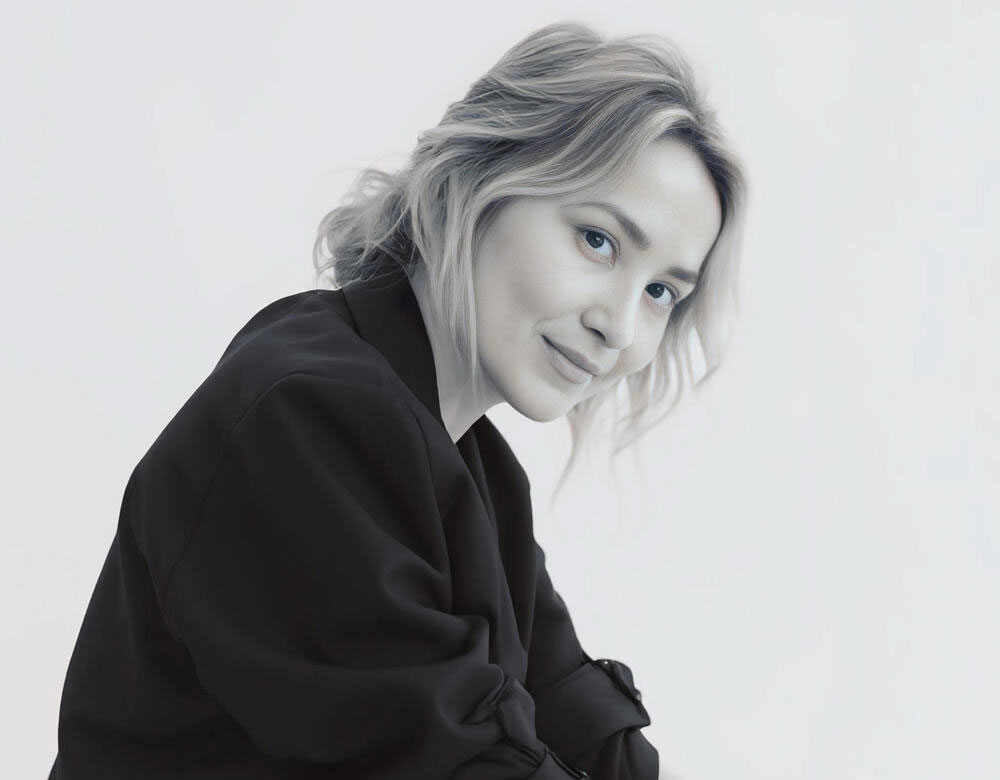
You describe your work as “an ode to stillness and sensuality.” What does stillness mean to you in practice—on the canvas and in life?
For me, stillness is not the absence of movement, but a deep presence. On the canvas, it’s the quiet space where shapes can breathe, where a gesture becomes eternal. In life, it’s the ability to slow down, to notice the curve of a hand, the sound of fruit being peeled, the way light lingers on a wall. Stillness is a form of intimacy—with myself, with the world, with beauty.
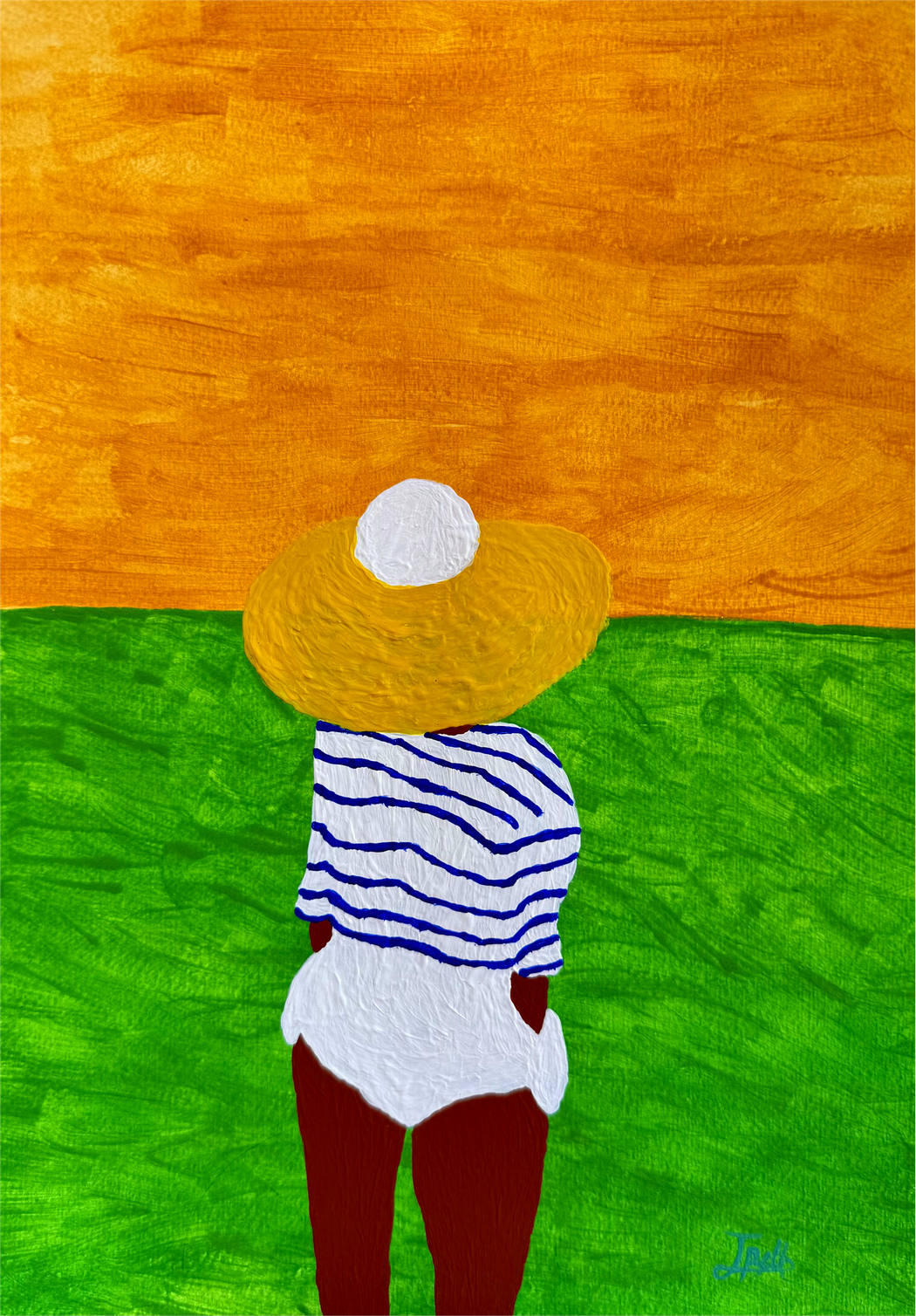 Jena Belle | Under The Sun Hat | 2025
Jena Belle | Under The Sun Hat | 2025
How did being self-taught shape your voice and your confidence as an artist?
Being self-taught gave me freedom. I never felt bound by rules or expectations; I learned to trust my instincts, to allow imperfection to lead me somewhere unexpected. Confidence came slowly, not from technique alone, but from realizing that my voice is valid precisely because it is mine, unfiltered. My path may look unconventional, but it has kept me honest and intuitive.
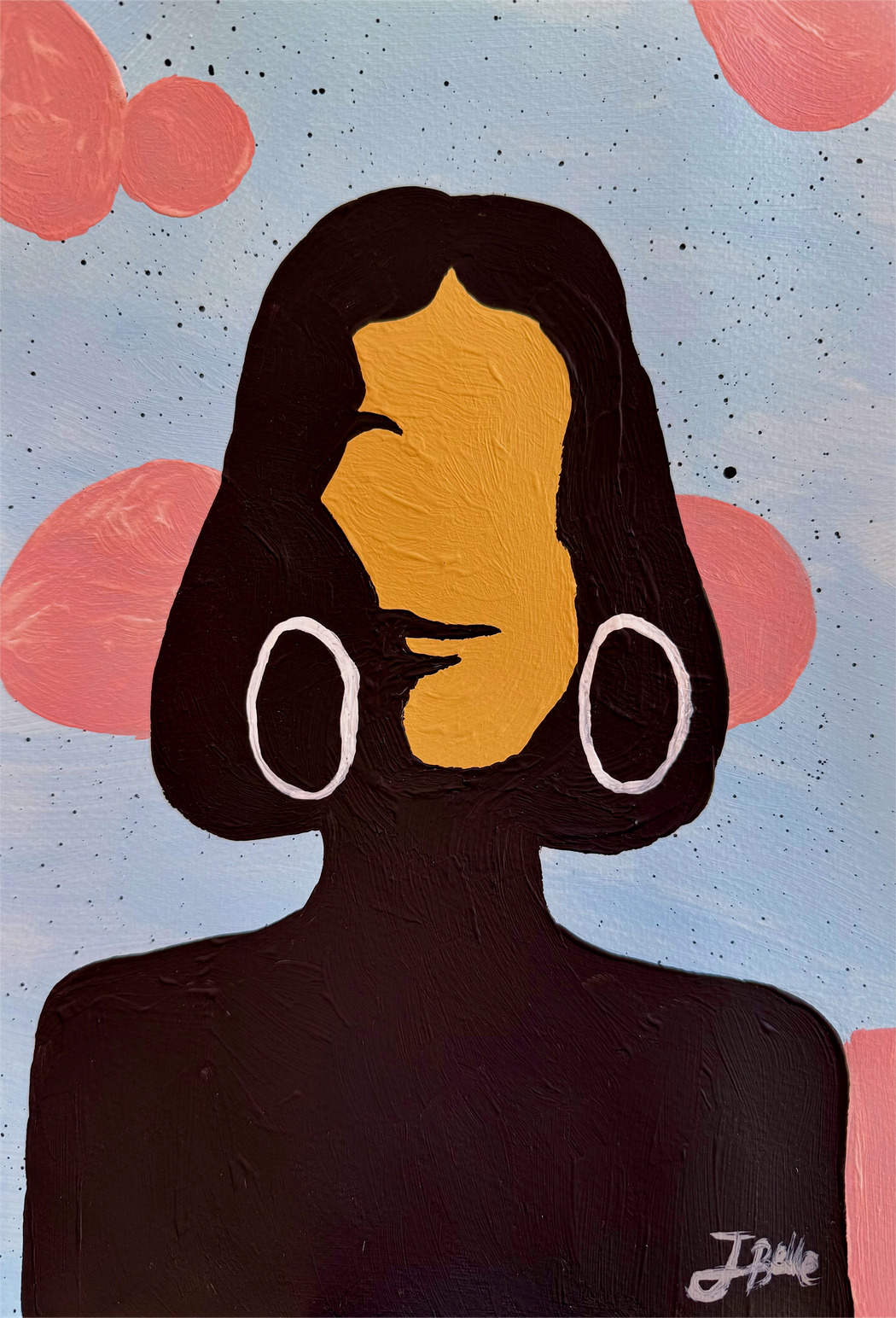 Jena Belle | Her Presence | 2025
Jena Belle | Her Presence | 2025
Your images often honor small rituals—peeling fruit, resting, listening. Which everyday ritual most often becomes a painting, and why?
Resting. I think of rest as sacred. In a world that celebrates constant productivity, I want to celebrate the pause—the moment of lying down, closing the eyes, exhaling. For me, it’s not laziness but a sensual act of reclaiming time, of being fully human. That ritual becomes a painting again and again because it feels universal yet deeply personal.
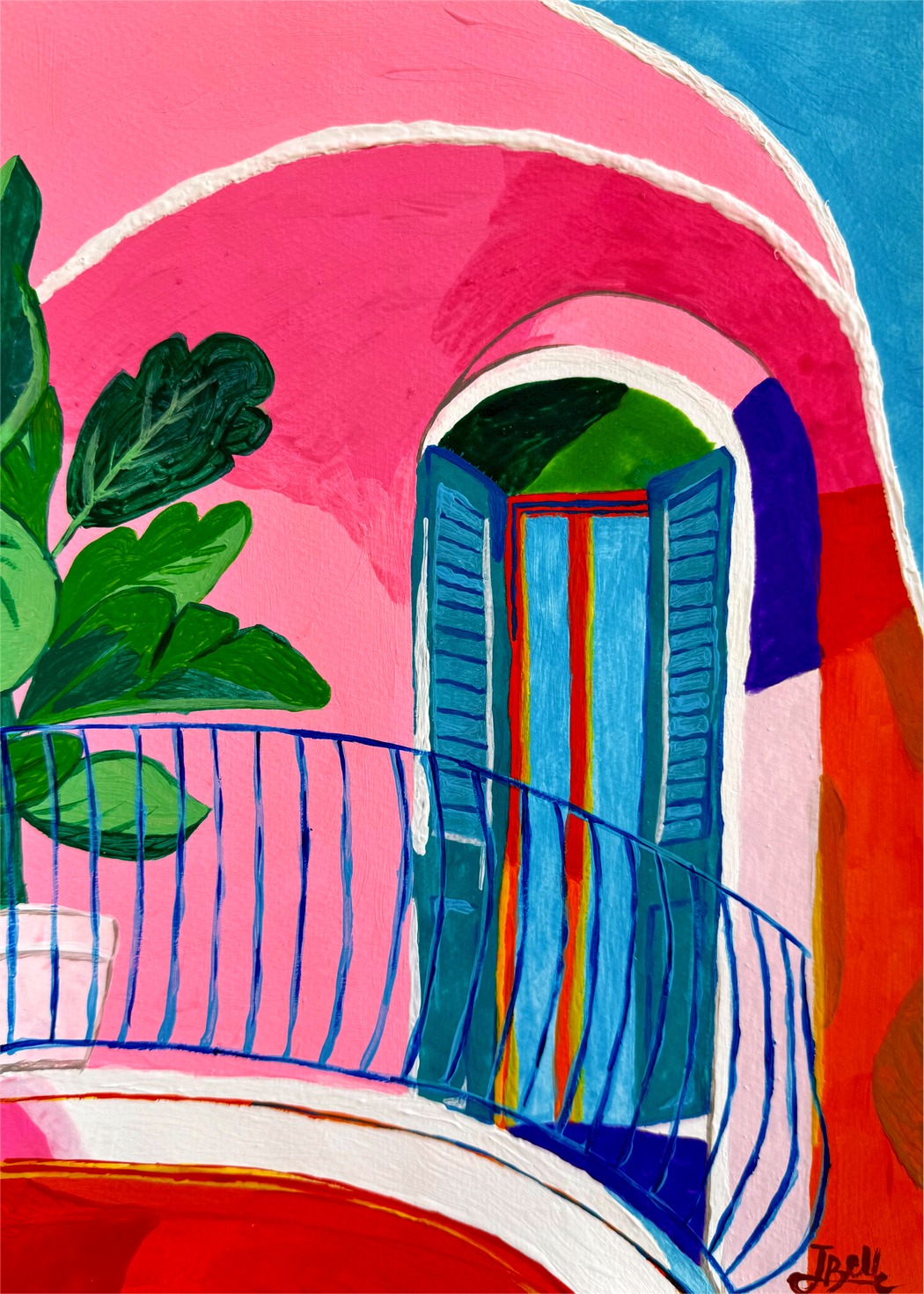 Jena Belle | Dolce Siesta | 2025
Jena Belle | Dolce Siesta | 2025
Italy appears in your palette and atmosphere. What is “Italian” in your work—the light, the color, the tempo, the architecture?
For me, Italy is a state of soul as much as a place. It’s in the golden light, the terracotta warmth, the languid rhythm of afternoons, the timeless geometry of arches and piazzas. When I paint, I try to capture not just the look of Italy but its tempo—the way life unfolds more slowly, with attention to beauty in the everyday.
Negative space and clean silhouettes carry a lot of emotion in your compositions. What’s your process for editing a scene down to its essentials?
I always begin with more than I need—sketches, colors, forms. Then I start removing. Editing is an act of tenderness: asking, “What truly matters here? What carries the emotion?” I strip away until only the essence remains. Negative space is as important as presence; it’s the silence that makes the voice stronger.
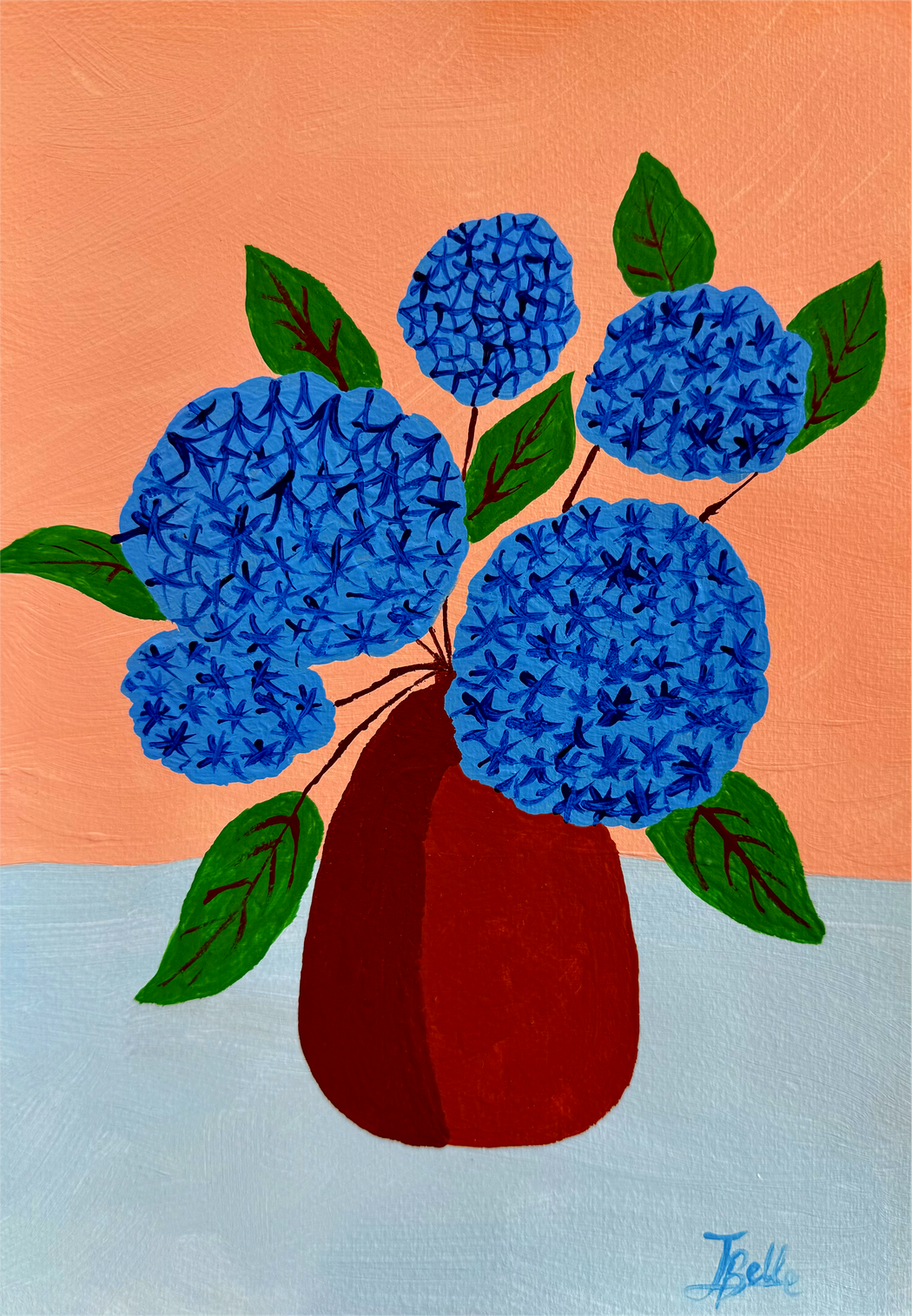 Jena Belle | Blue Symphony In A Clay Vase | 2025
Jena Belle | Blue Symphony In A Clay Vase | 2025
Titles in your work are poetic. How do you find them, and have you ever changed a painting after finding its title?
Titles come like whispers. Sometimes a phrase appears before the painting, like a secret waiting to be revealed. Other times, the painting tells me its name at the very end. I have changed a painting after naming it—when a title uncovers another layer of meaning, I feel compelled to align the image with its newfound truth.
What responses from collectors or viewers have surprised you the most?
The most surprising responses are when people see themselves in the work in ways I never expected. Someone once told me that a figure reminded them of their mother resting after cooking, another saw in my still lifes a memory of childhood summers. I’m always moved by how a very personal gesture can become universal. That is the magic of art—it leaves space for others to enter and find their own stories.
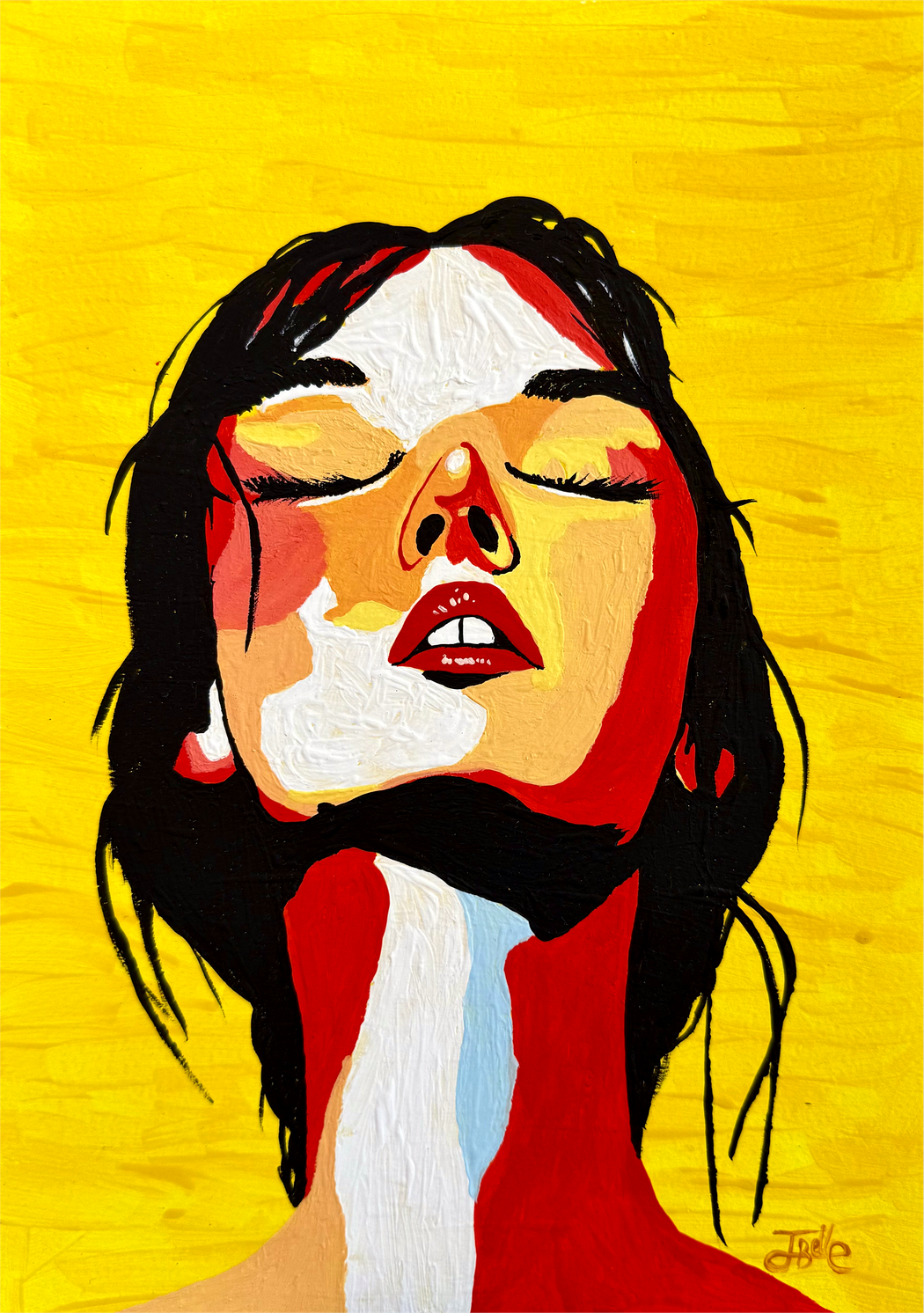 Jena Belle | Inner Bloom | 2025
Jena Belle | Inner Bloom | 2025

Leave a Reply